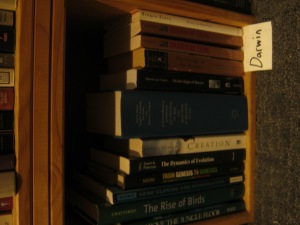To be impressive, however, is not to be miraculous, as Indians and others still regularly describe the political system that crystallised after independence. There was never anything supernatural about it: terrestrial explanations suffice. The stability of Indian democracy came in the first instance from the conditions of the country’s independence. There was no overthrow of the Raj, but a transfer of power by it to Congress as its successor. The colonial bureaucracy and army were left intact, minus the colonisers.
For twenty years, across five polls between 1951 and 1971, Congress never once won a majority of votes. In this period, at the peak of its popularity as an organisation, its average share of the electorate was 45 per cent. This yielded it crushing majorities in the Lok Sabha, amounting to just under 70 per cent of the seats in Parliament. In effect, the distortions of the electoral system meant that at national level it faced no political opposition. At state or district level, this did not hold. But there, the centre had powers that could deal swiftly with any local trouble. These too were heirlooms of the Raj, eagerly appropriated by Congress.
No other system of inequality, dividing not simply, as in most cases, noble from commoner, rich from poor, trader from farmer, learned from unlettered, but the clean from the unclean, the seeable from the unseeable, the wretched from the abject, the abject from the subhuman, has ever been so extreme, and so hard-wired with religious force into human expectation.
Fixing in hierarchical position and dividing from one another every disadvantaged group, legitimating every misery in this life as a penalty for moral transgression in a previous incarnation, as it became the habitual framework of the nation it struck away any possibility of broad collective action to redress earthly injustice that might otherwise have threatened the stability of the parliamentary order over which Congress serenely presided for two decades after independence.
By the end of his life, Nehru would have liked a more presentable fig-leaf for Indian rule, but that he had any intention of allowing free expression of the popular will in Kashmir can be excluded: he could never afford to do so. He had shown no compunction in incarcerating on trumped-up charges the ostensible embodiment of the ultimate legitimacy of Indian conquest of the region, and no hesitation in presiding over subcontracted tyrannies of whose nature he was well aware.
Surrounded by mediocrities, Nehru accumulated more posts than he could handle – permanent foreign minister as well as prime minister, not to speak of defence minister, head of the planning commission, president of Congress, at various times. He was not a good administrator, finding it difficult to delegate, but even had he been, this was a pluralism too far.
Nor was Ambedkar consoled by sanctimonious plaudits for his role in drafting the constitution. He knew he had been used by Congress, and said two years later: ‘People always keep on saying to me: oh sir, you are the maker of the constitution. My answer is I was a hack. What I was asked to do I did much against my will.’
Secularism in India, it is explained, does not mean anything so unsophisticated as the separation of state and religion. Rather – so one version goes – the Indian state is secular because, while it may well finance or sponsor this or that religious institution or activity, in doing so it maintains an ‘equidistance’ from the variegated faiths before it.
As with other oppressed minorities in societies keen to advertise their pluralism, a sprinkling of celebrities – a batsman or film star here, a scientist or symbolic office-holder there – adorns, but doesn’t materially alter, the position of the overwhelming majority of Muslims in India.
What the Armed Forces (Special Powers) Act effectively does in such zones, the young Indian historian Ananya Vajpeyi has written, is ‘to create an entirely separate space within India, a sort of second and shadow nation, that functions as a military state rather than an electoral democracy, and only remains hidden because it is not, at least so far, officially ruled by a general or a dictator’. This space should ‘not be thought of as a zone of exception, but as a contradiction so extreme that it undoes the totality in which it is embedded’, which breaks down into ‘two distinct and mutually opposed regimes’ that form ‘two nations: India and non-India’.
Had the party or state been truly secular, in each case this would have been a priority, but that was the last thing it had in mind. There cannot be a genuinely secular party or state unless it is willing to confront religious superstition and bigotry, rather than truckle to them. Neither party nor state has ever contemplated doing that, because both have rested, sociologically speaking, on Hindu caste society. The continued dominance of upper castes in public institutions – administration, police, courts, universities, media – belongs to the same matrix.
After Independence, Gandhi’s doctrines were consigned to the museum, but his saturation of politics with Hindu pathos lived on.
Indian secularism of the post-independence period had never sharply separated state and religion, let alone developed any systematic critique of Hinduism.
The BJP does not oppose, but upholds secularism, for ‘India is secular because it is Hindu.’
‘Myths have a way of running away with their proponents,’ G. Balachandran, an Indian critic of this outlook, of whom there have not been that many, has remarked: ‘Belief in the essentially secular character of the modern Indian state and society can often be little more than an exercise in self-congratulation which overlooks or rationalises the sectarian religious outlook pervading large areas of contemporary social and political practice.’
Mayawati’s erection of 150,000 statues of Ambedkar, not to speak of two hundred effigies of her party’s elephant symbol and of herself (the largest 24 feet high, and like the rest covered in pink polythene as the state went to the polls in March, on the orders of the Election Commission, so as not to beguile or distract voters), at the cost of more schools and healthcare, offers an extreme case of this identity politics, which does not seek to abolish caste, as Ambedkar had wanted, but to affirm it.
Castes continue to be, as they have always been, and Ambedkar saw, one of the purest negations of any notion of liberty and equality, let alone fraternity, imaginable. That the Indian state has never lifted a juridical finger to do away with them, but in seeking only to ameliorate has if anything legally entrenched them, says more about its secularism than the omission of any reference to it in the constitution, or the belated passage of an amendment rectifying the omission to embellish the Emergency.
With it has come a large measure of convergence between Congress and the BJP in government, each pursuing at home a neoliberal economic agenda, as far as their allies will allow them, and abroad a strategic rapprochement with the United States. Culturally, they now bathe in a common atmosphere in which religious insignia, symbols, idols and anthems are taken for granted in commercial and official spaces alike.
In India democracy never extended very far from government to the parties contending for it, which were always run from the top down. Today, however, many have become something other than the oligarchic organisations into which the political scientists Ostrogorsky and Michels thought all parties must sooner or later turn. With the exception of the communists and the BJP, they have become family firms competing for market shares of the electorate and so access to public office.
Of the ensuing scenery, André Béteille, the doyen of sociologists of India, has written that the ‘abject surrender’ of Congress to a single family, corrupting all other parties, has done irreparable harm to Indian democracy, poisoning the wells of public life.
The court, now self-recruiting, is the most powerful judiciary on earth. It has acquired such an abnormal degree of authority because of the decay of the representative institutions around it. Even admirers are aware of the risks. In the graphic phrase of Upendra Baxi, India’s leading legal scholar and one of the first to bring a public interest suit before the court, it is ‘chemotherapy for a carcinogenic body politic’
Comparing India and China from another angle, one of the most lucid political minds of the subcontinent, Pratap Bhanu Mehta, has observed that in the People’s Republic, where there is no democracy, communist rule is based on output legitimacy: it is accepted by the masses for the material benefits it takes great care to deliver them, however unequally. Whereas in India, democracy allows just the opposite – an input legitimacy from the holding of free elections, that thereby excuses the political class from distributing more than confetti to the masses who have elected them.
Three years later, with typical dishonesty, the Manmohan regime renamed it as ‘Gandhian’ to fool the masses into believing that Congress was responsible for it.
Caste, not class, and alas, least of all the working class, is what counts most in popular life, at once sustaining Indian democracy and draining it of reconstructive energy.
If the poor remain divided against themselves, and workers are scattered and ill-organised, what of other sources of opposition within the political system? The new middle class has turned against mega-corruption, but is scarcely foreign to the bribe and the wink, let alone favours to kin, at its own level of advantage. Besotted with a culture of celebrity and consumption, on spectacularly vapid display in much of the media, and to all appearances hardening in collective egoism, it is no leaven in the social order. The intelligentsia is another matter. There, India possesses a range and quality of minds that perhaps no other developing society in the world, and not that many developed ones, can match. Whether working inside or outside the union, it forms an interconnected community of impressive acuity and distinction. In what kind of relationship does it stand to the country? Intellectuals are often held, quite wrongly, to be critical by definition. But in some societies, the mistake has become internalised as a self-conception or expectation, and so it probably is for most Indian intellectuals. How far do they live up to it?
A rigid social hierarchy was the basis of original democratic stability, and its mutation into a compartmentalised identity politics has simultaneously deepened parliamentary democracy and debauched it. Throughout, caste is the cage that has held Indian democracy together, and it has yet to escape.
In the 1920s the great Tamil iconoclast E.V. Ramasamy could declare: ‘He who invented God is a fool. He who propagates God is a scoundrel. He who worships God is a barbarian.’
Hindu culture, exceptionally rich in epics and metaphysics, was exceptionally poor in history, a branch of knowledge radically devalued by the doctrines of karma, for which any given temporal existence on earth was no more than a fleeting episode in the moral cycle of the soul.
‘In an overwhelmingly religious society,’ one subcontinental scholar has written, ‘even the most clear-sighted leaders have found it impossible to distinguish romanticism from history and the latter from mythology.’
Moral indignation is too precious an export to be wasted at home. That the democracy of his country and the humanity of his leader preside over an indurated tyranny, replete with torture and murder, within what they claim as their national borders, need not ruffle a loyal Indian citizen.
Nobel prizes are rarely badges of political courage – some of infamy – so there is little reason for surprise at a silence that, in one form or another, is so common among Indian intellectuals.
What is true is that no break away from the union is conceivable in this area, not because of any economic impossibility, but because Delhi can unleash overwhelming military force, as it has done for a half a century, to crush any attempt at secession, and can count on exhaustion eventually wearing out all resistance, as it cannot in Kashmir, where the alternatives of independence or inclusion in Pakistan have not left the Valley, and any free vote would prefer either to the Indian yoke.
Still, at the altar of Trimurti, costs are discounted inversely to gains. Unity, whose moral and political deadweight is heavier, is safer from reproach than democracy or secularity.
The dynasty that still rules the country, its name as fake as the knock-off of a prestige brand, is the negation of any self-respecting republic.
Congress had its place in the national liberation struggle. Gandhi, who had made it the mass force it became, called at independence for its dissolution. He was right. Since then the party has been a steadily increasing calamity for the country. Its exit from the scene would be the best single gift Indian democracy could give itself.
The political ills that all well-meaning patriots now deplore are not sudden or recent maladies of a once healthy system. They descend from its original composition, through the ruling family and its affiliates, and the venerations and half-truths surrounding these and the organisation enclosing them.





















